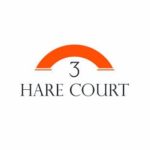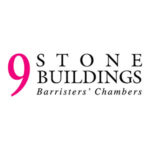Wills & Trusts Law Reports | Winter 2020 #181This was a second appeal against the decision of HHJ Pelling to overturn the trial judge’s order declaring inter alia that A was a 50% beneficial owner of A and R’s former home (the property) under a common intention constructive trust.
The trial judge had found that A’s father had bought the property in 1998 with the intention that it should be A and R’s family home. In 2008, A’s father had transferred the property to R for nil consideration. The trial judge had found that A’s father intended A to have a beneficial interest in it and had originally planned to transfer it into A a...
Wills & Trusts Law Reports | Web OnlyA house was purchased in the joint names of the defendant and his son, the claimant. At least part of the reason for the claimant’s inclusion was that it allowed the defendant to benefit from a mortgage needed to finance the purchase. The TR1 bore an ‘X’ in Box 11 which appeared next to the words ‘the transferees are to hold the property on trust for themselves as tenants in common in equal shares’. The claimant sought a declaration that the property was held as described by Box 11 and an order for sale. The defendant maintained in a number of witness statements that the ticking of Box 1...
Context is everything when defining the common intention constructive trust. Aidan Casey QC and Tom Poole discuss recent case law Marr has changed the way courts should approach disputes about the beneficial ownership of family-owned investment property portfolios. It has been recognised since the decisions of the House of Lords in Pettitt v Pettitt [1970] …
Continue reading "Beneficial ownership: Marring the deal"
This post is only available to members.
Mark Pawlowski looks at how the courts calculate the parties’ beneficial shares when events post-acquisition give rise to a claim to an enlarged share in the jointly owned family home ‘The courts take a holistic approach to the question of the assessment of the parties’ respective shares, so that, although financial contributions play an important …
Continue reading "TOLATA 1996: A holistic approach"
This post is only available to members.
Lehna Gardiner and Greg Williams consider equitable accounting and in particular the circumstances in which an occupation rent may be payable and how it will be calculated ‘Where one party is excluded from the enjoyment of the property, it is likely that a claim to an occupation rent will arise in principle.’ Socrates is reputed …
Continue reading "TOLATA 1996: Making allowances"
This post is only available to members.
Mark Pawlowski highlights some far-reaching implications arising out of the case law on beneficial ownership ‘The size of the parties’ respective shares upon acquisition will be determined according to the terms of their express trust regardless of their actual contributions to the purchase of the property.’ Let us begin with the following example. Suppose Mr …
Continue reading "Cohabitation: Fair shares in the family home?"
This post is only available to members.
Mark Pawlowski examines recent case law on resulting trusts, the presumption of advancement and joint borrowing under a mortgage ‘The court reiterated the view, expressed in Gorman, that prima facie, if the purchase is financed in whole or in part on mortgage, the person who undertook liability for the mortgage repayments, as between joint owners, …
Continue reading "Trusts: Who owns what?"
This post is only available to members.
Naveed Ali outlines the development of the constructive trust principle to aid cohabitees ‘The court should establish the intentions of the parties with evidence; where intention cannot be inferred, the court may impute an intention which the parties may never have founded.’ The regulation of proprietary rights after a breakdown of marriage is extensive: the …
Continue reading "Constructive trusts: Keeping up with the Jones"
This post is only available to members.
Peter Shaw QC explores the principles of ascertainment of beneficial ownership in a property purchase tainted with illegality ‘Having found that Mr and Mrs Kliers were the true beneficial owners, it would perpetuate the fraud to leave the property in Mr Schmerler’s ownership (without making a declaration of beneficial ownership). The illegal activities were required …
Continue reading "Beneficial ownership: Honesty is the best policy"
This post is only available to members.
Joss Knight examines a claim for a common intention constructive trust where a cohabitee has passed away ‘The administrators found themselves defending proceedings on behalf of the estate and attempting to deny the existence of a conversation to which they were not, on anyone’s case, a party.’ Claims for a declaration that property is held …
Continue reading "Constructive trusts: Gone, but not forgotten"
This post is only available to members.








